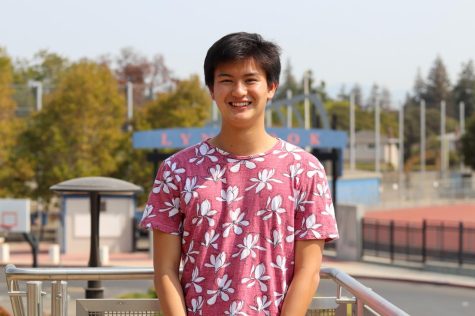LSSAP, program allowing Hyde, CLIP and McAuliffe transfers to Lynbrook, to expire
Graphic illustration by Elena Williams
The issue of declining enrollment is not something new. Taking in input from community members, the district hopes to come up with solutions that will be best for students, families and staff.
February 19, 2021
FUHSD has not yet decided whether to renew the Lynbrook Supplemental School Assignment Plan (LSSAP) program, which allows students from Hyde Middle, McAuliffe Middle and Miller Middle’s Chinese Language Immersion Program (CLIP) to attend Lynbrook. While the program has succeeded at increasing enrollment at Lynbrook and stabilizing growth at Cupertino High, the district may now have to consider new solutions to address decreasing enrollment at four FUHSD schools.
“The decision [about continuing LSSAP] doesn’t really need to be made right now, but it will probably be explored sometime this semester,” Principal Maria Jackson said. “It will need to be discussed by the board. I don’t know when it will be added to the board agenda. Honestly, I do expect that they’ll consider continuing it.”
Over the past decade, Lynbrook has had the lowest enrollment across all FUHSD schools. In a 2019 meeting with the Citizens Advisory Committee on Enrollment (CAC), a group formed to study FUHSD’s enrollment needs, FUHSD Superintendent Polly Bove noted that schools should ideally have a minimum of 1,750 students to maintain existing academic programs. If not, the district may be forced to reduce funding and educational programs.
In the 2019-20 school year, resident enrollment — the number of attending students who live within Lynbrook residential boundaries — totaled only 1,582. The LSSAP contributed another 209 students, and other transfers and special cases accounted for 131. With the help of professional demographers, district personnel predicted enrollment decreases.
“Right now, we are seeing decline in many of our schools, but it is a pretty easy thing to manage in terms of staff turnover and natural attrition,” Bove said. “We don’t have any other plan, other than LSSAP, to mitigate the disproportionate decline at Lynbrook, but we are going to keep watching it. This is not a surprise to us.”
Because of high price tags on properties within the Lynbrook boundaries and, as a result, a decreasing number of young families moving in, the district allowed students living outside the boundaries to attend the school. In 2017, FUHSD created LSSAP to address Lynbrook’s declining enrollment numbers. All students who attend the charter-like McAuliffe, located a five-minute walk from Lynbrook, or CLIP from Miller had the option to become Vikings. Students like Class of 2022 President Joe Lin, who was part of the CLIP, chose to do so because many of his friends were going to attend Lynbrook.
“It’s mainly because at Miller I made so many friends, especially through the CLIP program,” Lin said. “I wanted to keep those connections throughout my high school life.”
Through LSSAP, a select few Hyde students, who would usually attend Cupertino, may petition to attend Lynbrook. Each year, around 26 Hyde students are selected from a lottery of those hoping to attend Lynbrook, but that is coming to an end. The incoming Class of 2025 will be the last Hyde students to attend Lynbrook unless FUHSD renews the LSAAP.
“I chose Lynbrook over Cupertino because I lived far closer to Lynbrook than Cupertino, and academically I felt that Lynbrook would be a better environment, pushing me more and providing me with greater opportunities,” junior Aryan Shah said. “I think it sucks [that LSSAP is ending]; I know that a lot of students who may prefer a smaller high school experience or a more academically focused environment may not be able to thrive as much at Cupertino compared to Lynbrook.”
Applications for all students petitioning to join the incoming freshman class closed on Feb. 5 at 3 p.m.. The process involved submitting the online Lynbrook registration and the ninth-grade Residency Documentation forms before turning in the application for LSSAP. To help eighth-graders and their families make their decisions, Lynbrook hosted a virtual information night for eligible transfer students and parents, which highlighted the educational environment, opportunities and extracurricular activities for students. In total, 71 Hyde, CLIP and McAuliffe students applied.
After including the number of accepted LSSAP transfers, Lynbrook projects an enrollment of 1,815 students in the upcoming school year, down 105 students from this school year. The dramatic drop will likely result in a decrease in the number of sections — periods in which a certain class is offered — by about 20.
In November 2019, the CAC unanimously recommended extending LSSAP through the 2021-22 school year. Many on the committee saw LSSAP as an essential stopgap for the effects of a smaller student body, but they noted that it might not be a permanent solution. According to predictions made at that meeting, Lynbrook’s resident enrollment is projected to drop even further, down to 1,345 by the 2023-34 school year. Similarly, Cupertino — for which Hyde is a feeder school — expects to lose 211 students in the same time period. As a result, Cupertino may not be able to sacrifice its students to Lynbrook through the LSSAP program for many years. Even with the LSSAP program, Lynbrook’s numbers are expected to fall far below the 1,750-student threshold within three years.
With enrollment at Lynbrook, Cupertino, Monta Vista and Homestead projected to fall and only Fremont holding steady, the district faces the trend of declining enrollment, an issue that no longer merely affects Lynbrook.
Despite the challenge, the enrollment issue is not something new. Taking in input from community members, the district hopes to come up with solutions that will be best for students, families and staff. For Jackson, that rings true through her decades of experience working at Lynbrook.
“When I started here in the early 90’s, the size of the school was just over 1,200. It seemed fine to me,” Jackson said. “There were kids learning, growing, having fun and doing all kinds of electives. I feel assured that, district-wide, we will remain dedicated to keeping our schools vibrant and healthy for all our students.”





























































